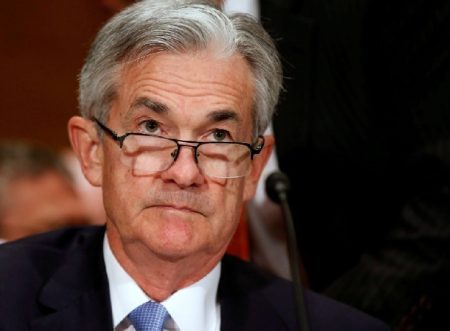Cardano Network Disruption: Technical Flaw Triggers Chain Split and Market Reaction
Unintended Blockchain Split Sends Ripples Through Cardano Ecosystem
In an unexpected turn of events that has rattled confidence in one of cryptocurrency’s major networks, Cardano (ADA) experienced a significant blockchain disruption on Friday when a malformed transaction triggered a network split. The incident, which caused the cryptocurrency’s price to drop more than 6%, has sparked debate about network security and resilience within the broader blockchain community.
According to Intersect, Cardano’s ecosystem governance organization, the divergence occurred when a problematic delegation transaction passed validation on newer node versions but was rejected by older software. “This exploited a bug in an underlying software library that was not trapped by validation code,” Intersect explained in their comprehensive incident report. “The execution of this transaction caused a divergence in the blockchain, effectively splitting the network into two distinct chains: one containing the ‘poisoned’ transaction and a ‘healthy’ chain without it.”
The technical malfunction created immediate challenges for users, exchanges, and service providers across the Cardano ecosystem. While developers rushed to implement emergency protocols, cryptocurrency exchanges responded by temporarily suspending ADA deposits and withdrawals as a precautionary measure to protect user assets. This swift reaction from major stakeholders demonstrated the established crisis management procedures that have become standard in the maturing blockchain industry, though it did little to prevent the market’s negative response to the news.
Controversy Surrounds Incident Origins: Attack or Accident?
The incident quickly became mired in controversy regarding its cause and intent. Charles Hoskinson, the outspoken co-founder of Cardano, characterized the event in strong terms on social platform X, describing it as a “premeditated attack from a disgruntled stake pool operator” who had allegedly spent months “actively looking at ways to harm the brand and reputation of Input/Output Global,” the company behind Cardano’s development.
“Every single user was impacted,” Hoskinson claimed, emphasizing the widespread nature of the disruption. His assertions painted the incident as a malicious attempt to undermine the network rather than an accidental technical failure.
However, the narrative took an unexpected turn when an individual using the handle “Homer J.” came forward on social media, claiming responsibility for the transaction that triggered the split. In contrast to Hoskinson’s characterization, Homer J. portrayed the incident as an unfortunate accident rather than a deliberate attack. “Sorry Cardano folks, it was me who endangered the network with my careless action yesterday evening,” they wrote in a public apology. The user described their actions as a personal technical challenge to reproduce a “bad transaction,” claiming they had relied on AI-generated instructions while blocking traffic on their server.
“I’ve felt awful as soon as I realized the scale of what I’ve caused,” the user continued. “I know there’s nothing I can do to make up for all the pain and stress I’ve caused. Difficult to quantify the negligence on my behalf. I am sorry, I truly am. I didn’t have evil intentions.” Homer J. also explicitly denied financial motivations, stating they had not sold or shorted ADA tokens and had not coordinated with others, insisting that they “take full responsibility for it and whatever consequences will follow.”
Technical Response and Network Recovery Efforts
The divergence in the blockchain created immediate technical challenges for the Cardano ecosystem. The network split caused operators to build blocks on different branches of the chain, effectively creating parallel versions of transaction history. This scenario represents one of the most serious types of disruptions for any blockchain network, as it threatens the consistency and reliability that form the foundation of distributed ledger technology.
In response to the crisis, Cardano’s development teams and service providers quickly coordinated emergency measures. Operators were urged to upgrade to patched node software that could reconcile the divergence and rejoin the main chain. Intersect’s incident report emphasized that while the network experienced serious complications, “no user funds were lost, and most retail wallets were unaffected because they were running node components that handled the malformed transaction safely.”
Despite Hoskinson’s assertion that the network “didn’t go down,” the incident report acknowledged significant disruptions: “It is important to note that the network did not stall. Block production continued on both chains throughout the incident, and at least some identical transactions appeared on both chains. However, to ensure the integrity of the ledger, exchanges and third-party providers largely paused deposits and withdrawals as a precautionary measure.”
The response highlighted both the resilience built into Cardano’s architecture and the vulnerabilities that still exist in even well-established blockchain networks. The incident will likely prompt further review of Cardano’s validation processes and how cross-version compatibility is managed during software upgrades.
Investigation and Security Implications for Blockchain Networks
The security implications of the incident have prompted broader investigation. Intersect confirmed that the wallet responsible for the malformed transaction had been identified and linked to “a participant from the Incentivized Testnet (ITN) era” of Cardano’s development. The organization also revealed that relevant authorities, including the Federal Bureau of Investigation, were being engaged to investigate the matter as “a potential cyberattack on a digital network.”
This escalation to involve law enforcement highlights the increasingly serious approach being taken toward blockchain security incidents. As cryptocurrencies and blockchain networks become more integrated into mainstream financial systems, disruptions are no longer viewed merely as technical glitches but as potential cybersecurity threats with real-world consequences.
The incident underscores a critical challenge facing all blockchain networks: balancing innovation and development speed with robust security protocols. The bug that enabled the malformed transaction to cause a chain split existed in “an underlying software library,” suggesting that dependencies and third-party components remain potential vectors for blockchain vulnerabilities. For Cardano, which has built much of its reputation on a methodical, research-driven approach to development, this incident represents a particularly challenging moment for its security narrative.
Market Impact and Long-term Implications for Cardano
The immediate market reaction to the disruption was predictably negative, with ADA’s price declining more than 6% following the news. This price movement reflects the market’s sensitivity to technical disruptions in major blockchain networks, particularly those that affect fundamental operations like transaction processing.
According to Hoskinson, remediation efforts will be substantial, with the Cardano co-founder stating that “it will take weeks to clean up the mess.” This timeline suggests significant work remains to fully resolve all effects of the chain split and restore complete functionality across the ecosystem.
The longer-term implications for Cardano remain to be seen. The network has weathered technical challenges before, but this particular incident touches on core aspects of blockchain reliability. For a project that positions itself as a more methodical, secure alternative to other smart contract platforms, maintaining user and developer confidence will be crucial in the aftermath of this event.
The incident also serves as a reminder to the broader blockchain community that even well-established networks with rigorous development practices remain vulnerable to unexpected technical failures. As blockchain technology continues its progression toward mainstream adoption, the industry’s ability to prevent, detect, and rapidly respond to such incidents will be a critical factor in building lasting trust in these systems.
In the coming weeks, the Cardano community will likely see enhanced transparency around the technical fixes being implemented and potentially new governance proposals to prevent similar incidents in the future. How effectively the ecosystem responds to this challenge will shape perceptions of Cardano’s resilience and may influence its competitive position in the evolving landscape of smart contract platforms.














